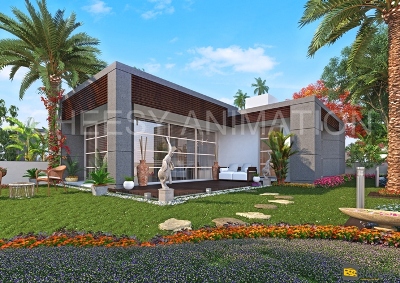To create
perfect 3D Models for anything there are several ways to do so and
even, there is a lot to be concerned about. The shapes, sizes, colour
combinations, work methods, output driven techniques and record
keepings by the model, etc. There are different ways in which 3D
Modelling techniques are used and there is also a huge scope for
the application of 3D Modelling principles.
 |
| 3D Architectural Modeling |
3D
Modelling Concepts:
A
sculpture, if seen, is itself a probable view of the 3D Model
perhaps. If a visit to a showroom is made, and a product is on the
display which is not the real product but just gives the notion to
the eyes which fall on it, that itself is a real model. This is what
designers call 3D Model of that particular product. 3D Models are of
many types and they also are meant for different purposes like,
training, replica making, decorative pieces, movie shoots,
photography, geographical studies, analysis of numerical statistics
(cones, planes, lines, triangles, parallelograms, etc.), product
marketing, board displays, and lot more. All of these are just few
applications of the Architectural
3D Modelling concepts, there are many other specialities where in
this concept can be used.
Composition
of 3D Models:
To create 3D
Models, there are professional modellers or model designers, and even
they can be constructed even by the novices or beginners with due
care taken and applying proper techniques. The composition part goes
in such a way that the real object is totally replicated by the
model, i.e. there remains no difference between the real product and
the model.
 |
| 3D Architectural Modelling |
Firstly the
decision is to be made, whether the model will be working or just
non-functional. The difference between the two is of the
functionality. In case of the working model, the designer has to make
sure that the model behaves exactly the same as the real product
does. And when it comes to the non-functional model, the look, feel
and texture of the real model is entertained, this doesn’t need to
work like the real product.
When a
decision is reached, the designer collects all the necessary
materials and information required to create the model. The
dimensions, colours and their shades, cut-outs, and drawing tools are
all put together with the creativity. The model is drawn generally on
a piece of a hard cardboard which acts as a base and rest everything
is then loaded onto it.


No comments:
Post a Comment